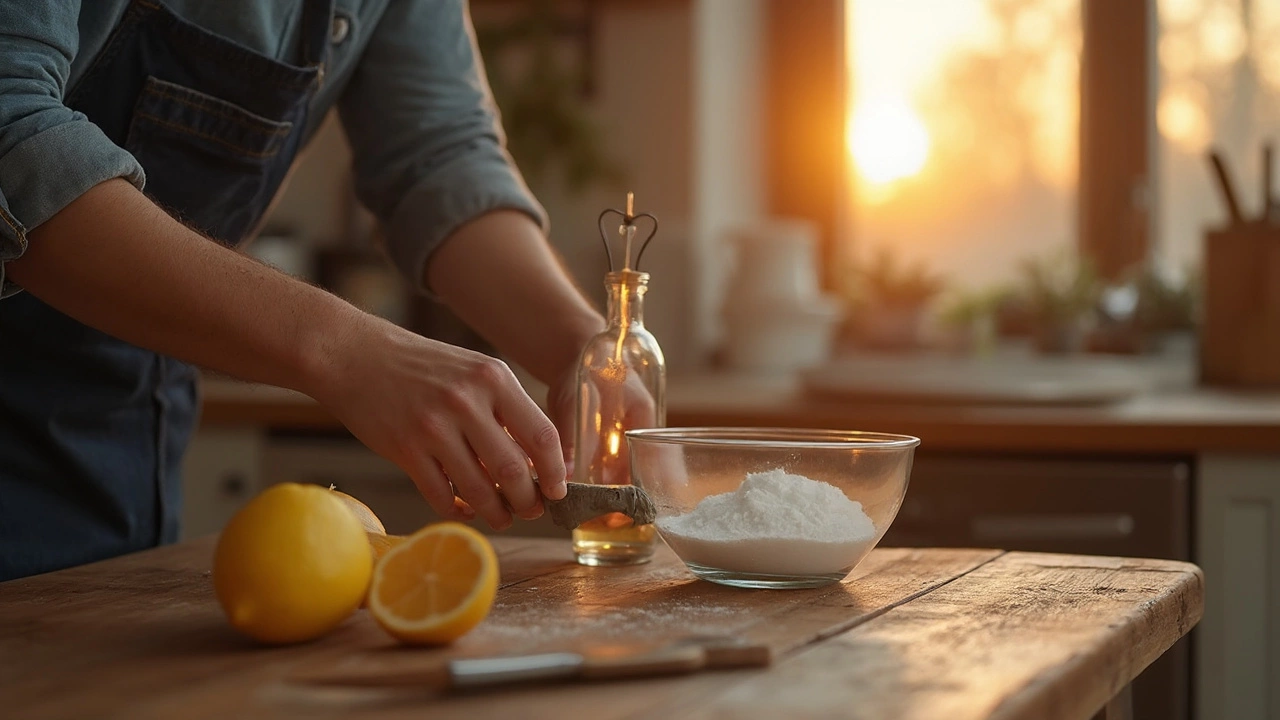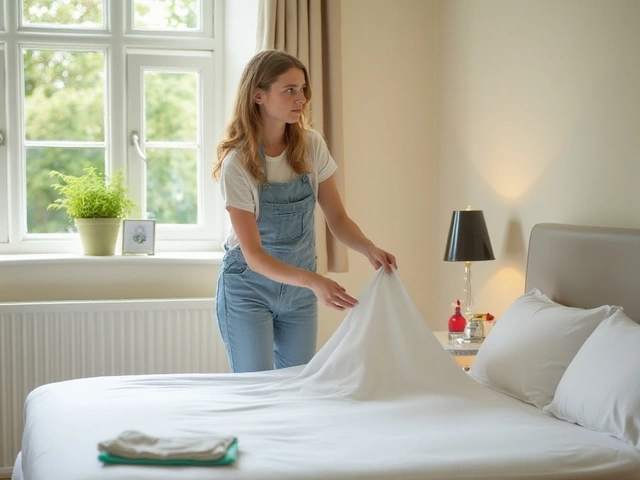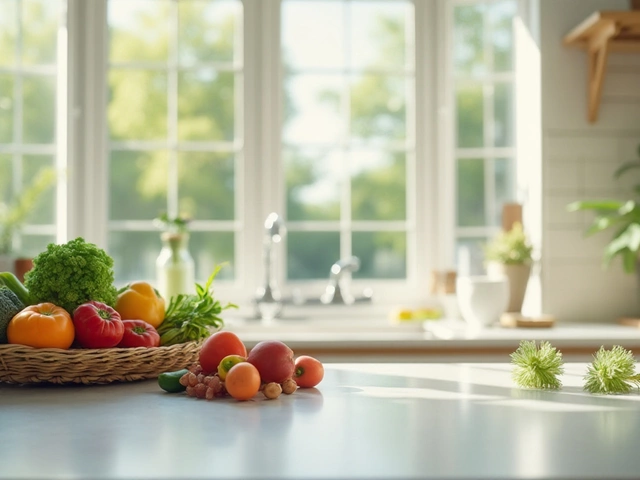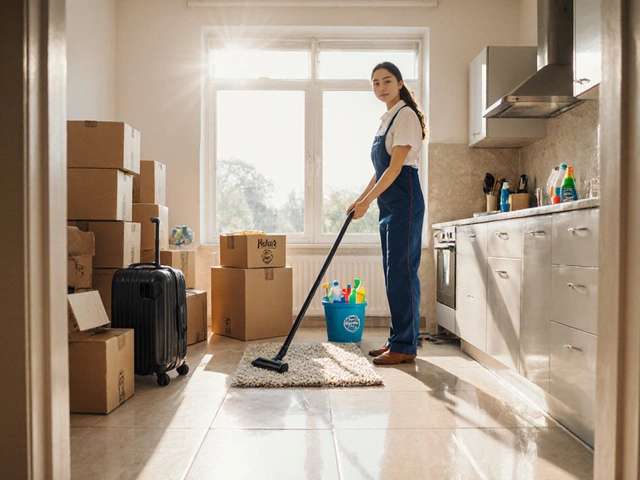Pulling open the oven after weeks of casserole carnage and pizza parties looks like a scene from a horror flick. You’re not alone. The stubborn, burnt-on grease, and gunk in most home ovens can turn from an everyday nuisance into a full-blown weekend project. What makes people pause isn’t just the work—it’s also the harsh commercial cleaners that sting the nose and leave behind that unmistakable chemical aftertaste. If you’re like me, you start hunting for homemade solutions that are safe, cheap, and actually work.
Why Homemade Oven Cleaners Outperform Store Brands
There’s a secret most cleaning aisles don’t want you to know: the best homemade oven cleaner stacks up impressively against the priciest spray bottles. The majority of commercial oven cleaners are loaded with sodium hydroxide and other caustic agents. These work fast but, let’s be real, they fill your kitchen with fumes that stick around for hours. At home, I’m not keen on those chemicals getting anywhere near my lasagna. The cool thing? Time-tested, simple ingredients—stuff already in your pantry—can get your oven gleaming without torching your lungs.
Baking soda and vinegar top the charts for a reason. There’s real chemistry going on: baking soda, or sodium bicarbonate, is mildly abrasive. When made into a paste and left to sit, it softens up gunk and gently scrubs away residue without scratching enamel. Vinegar, an acetic acid, dissolves mineral deposits and neutralizes odors. Science backs this duo. In a 2022 study published in "Clean & Green Home Journal," baking soda-vinegar mixtures outperformed generic store brands when it came to stuck-on grime after just one overnight application.
My own trick—passed down by my grandmother—adds a dab of dish soap to the mix. This lifts grease right off, especially when dealing with heavier spills. Why does this work? The soap breaks down oils, baking soda handles mild abrasion, and vinegar dissolves leftover minerals. You end up with an all-purpose paste so effective that Lydia, my spouse, uses it for just about everything: stovetops, sink stains, you name it.
But what about the dreaded oven racks? So many folks forget about those. Turns out, soaking them overnight in hot water with a splash of dish soap and a bit of baking soda does wonders. Scrub the next day with a brush or old toothbrush—you’ll wonder why you ever bothered fighting with toxic store sprays and endless scrubbing.
Remember, DIY isn’t always about saving a buck (even though it helps). You’re skipping on pollutants, reducing allergy triggers, and giving yourself more control. I’ve noticed our kitchen smells fresher, food tastes cleaner, and Lydia doesn’t sneeze straight through dinner prep anymore. So yeah, the switch from commercial to DIY feels like a little act of rebellion—and victory—every time the oven door swings open, sparkling clean.

Best Ingredients and How To Use Them: The Ultimate DIY Oven Cleaning Recipe
Let’s talk specifics. You know the main act is baking soda, vinegar, and maybe dish soap. But the details matter. Measurements, timing, and elbow grease all play a role. Here’s the method I swear by—tested through countless lasagna overspills and Sunday roasts gone wrong.
- Baking Soda: Go for at least half a cup. You want enough to coat the oven’s interior.
- Water: Add just enough to create a thick paste. Too watery, and it drips; too dry, and it won’t spread well.
- Dish Soap: Just a tablespoon works wonders. Any kind will do, but skip harsh antibacterial ones that can leave odd residues.
- White Vinegar: Keep a spray bottle handy; you’ll use this for rinsing.
- (Optional) Lemon Juice: A tablespoon adds a fresh scent and tackles extra grease.
Here’s my go-to process:
- Remove the oven racks and set them aside to soak in hot soapy water with a sprinkle of baking soda.
- Mix your baking soda, water, and dish soap into that thick paste.
- Slather it generously over the oven’s dirtiest spots. Don’t skimp on the corners and bottom.
- Shut the oven door and let it sit overnight—seriously, at least 12 hours works magic.
- The next morning, grab a scraper or old spatula, and lift off the paste. You’ll see most of the mess come off with it.
- Spray any stubborn patches with white vinegar. The fizz means it’s working. Wipe clean with a damp cloth or sponge.
- For oven racks, scrub them clean and rinse thoroughly before putting them back inside.
One honest tip: If the paste dries too hard, spritz it with water or vinegar to loosen it. Don’t gouge at baked-on stuff; patience does the trick. For glass oven doors, use the same paste but go easy—gentle circular motions keep scratches at bay.
Here’s a wild fact: Some folks add a dash of coarse salt to the paste for extra scrubbing power. Works great but skip this if your oven has a self-cleaning coating; salt can get rough on delicate surfaces.
If you’re in a pinch and have only vinegar and baking soda, you’ll still get good results. The real magic is letting that baking soda sit long enough to break up burnt debris. It isn’t instant—but it’s kind to your nose and lungs.
Ever wondered why baking soda and vinegar “explode” in the oven? It’s basic chemistry: baking soda is a base, vinegar is an acid. Together, they make carbon dioxide bubbles, which helps lift grime off the surface, making it easier to wipe. This reaction won’t hurt your oven either, as long as you rinse well.
And for the love of all things tasty, avoid using bleach or ammonia. Besides the health hazards, those two can turn your next batch of cookies into a toxic experiment. Stick to the basics, and your oven will reward you.

Extra Oven Cleaning Tips, Tricks, and Safety Hacks
Alright, you’ve nailed the basics, but there’s room to kick things up a notch. First up, always check your oven’s manual before going wild with pastes and potions. Modern ovens sometimes have protective coatings, and you don’t want to void a warranty getting a little too ambitious. If yours is labeled ‘self-cleaning,’ it’s usually best to skip abrasive scrubs. Still, many folks find that the baking soda method does less damage than harsh store-bought cleaners.
Don’t forget about ventilation. Even though baking soda and vinegar are about as safe as you can get, stale air still builds up with heavy scrubbing. Open a window or pop on the exhaust fan—you’ll avoid getting lightheaded, especially if you’re doing a deep clean with hot water steaming things up. I learned that the hard way, trying to multitask on a Saturday afternoon.
Cloth choice matters. Microfiber towels and soft sponges win every time. Old T-shirts cut up into rags work too, especially for corners. Skip steel wool—it gouges enamel and is overkill for most grime. For tight spaces (those pesky hinges and glass seams), grab an old toothbrush. It’s not pretty, but the results are night and day.
Every so often, check the oven lightbulb and seal. Grime collects on both, making the window foggy and the seal less effective. A quick wipe with vinegar works wonders. By keeping these little details clean, your oven heats evenly and stays energy-efficient—something Lydia reminds me saves a few bucks on every power bill.
If odor lingers after you’re done, let the oven run empty at a low temp (about 200°F) for 20 minutes. This helps dry things out and force out any last traces of vinegar smell. I like to leave an oven-safe bowl of water with a lemon slice inside; the steam and citrus clear the air quickly.
Got a really stubborn spill? Place a wet towel over the spot and warm the oven (low heat, no more than 225°F) for 10 minutes. The steam softens crusted food, so you can wipe it away with hardly any effort.
If you’re cleaning regularly, a quick wipe-down every couple of weeks saves you from major cleaning marathons. Light maintenance beat full-scale rescue missions every time. My routine? Friday nights, before the pizza goes in, I do a fast check—no more shame when guests peek through the oven window.
I’ll admit, I used to dread oven cleaning. Now, it’s a breeze. The secret is really in the low-cost, pantry-based, low-tox approach. You sidestep funky fumes, cut down on single-use bottles, and keep your kitchen running like a pro.
Other folks I’ve talked with online add their own spins. Some swear by a tablespoon of cornstarch in their mix for greasy jobs, others add a few drops of essential oil for fragrance. Just steer clear of anything flammable—safety comes first. If you have a self-cleaning function, only use these homemade methods for spot cleaning. For everything else, baking soda and vinegar are true favorites. And if your oven is still suffering after all this? It might be time to call in a professional. Sometimes the old ways do hit their limits, but for the vast majority of dirty ovens, homemade takes the win—and your lungs will thank you.
Life’s too short to waste on nasty fumes or elbow-aching scrubbing. With the homemade oven cleaner method, you get a spotless oven for pennies, and you actually know what’s going into your cleaning routine. Sometimes, the stuff hiding in plain sight is exactly what you need.





